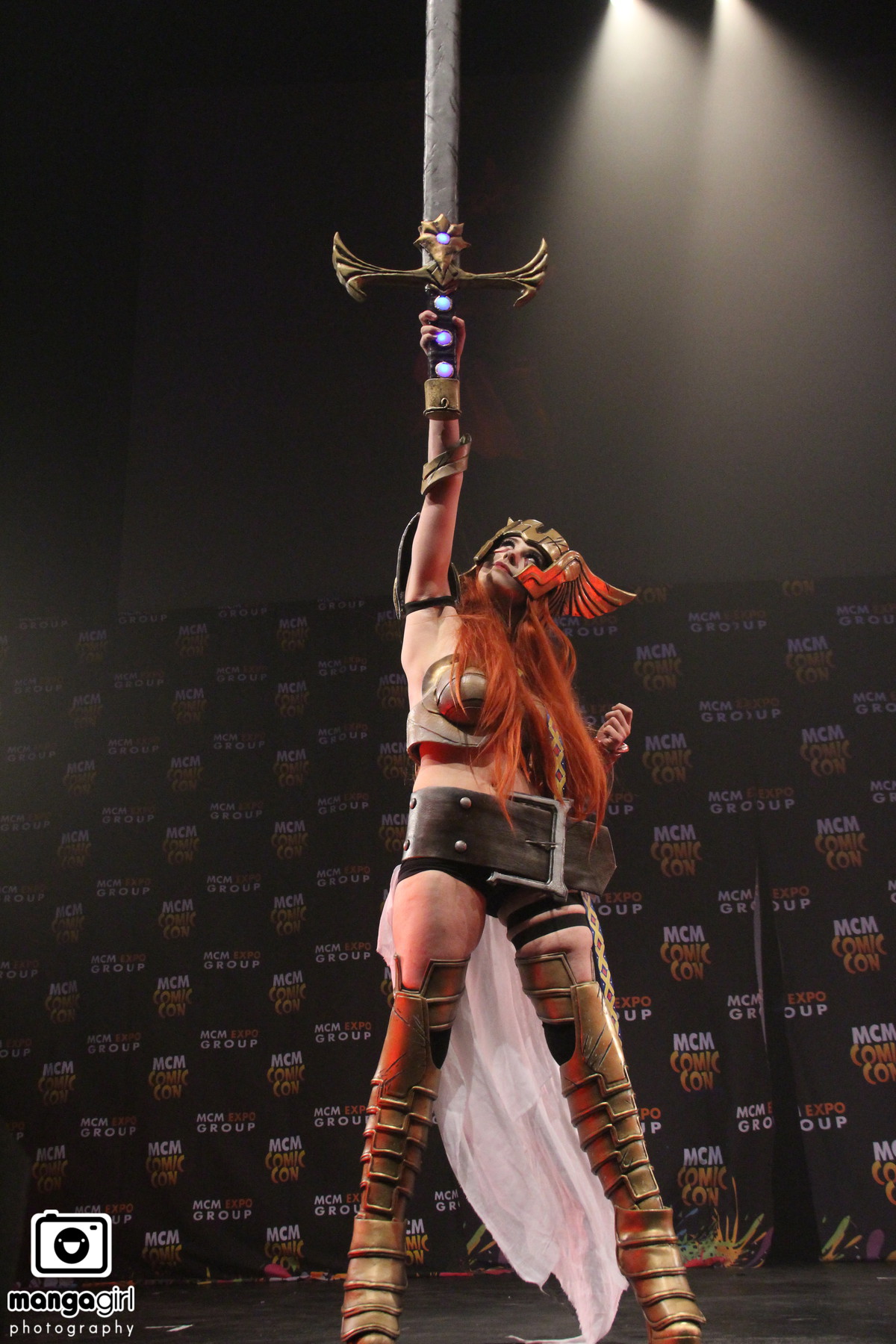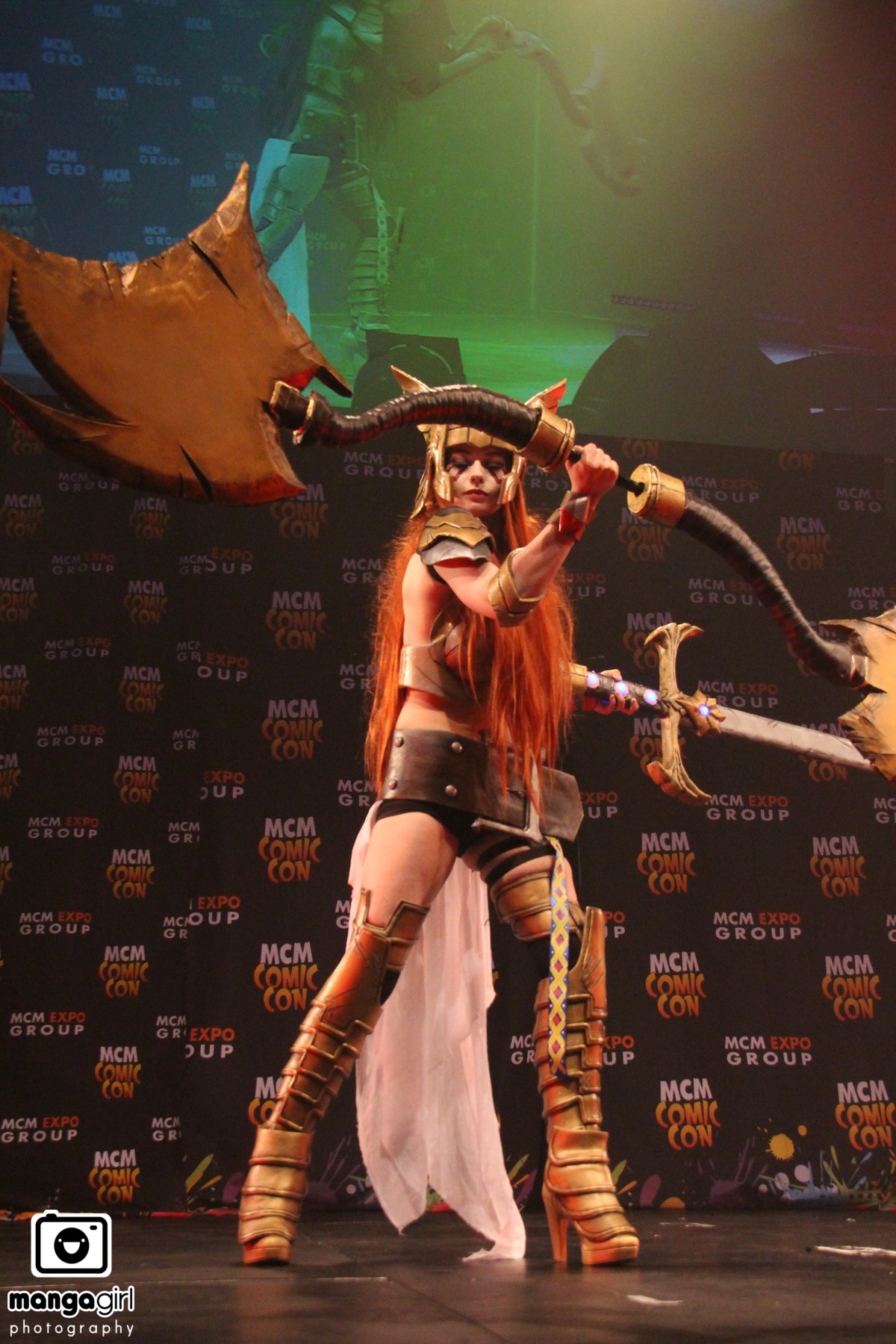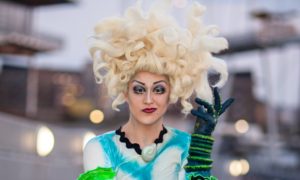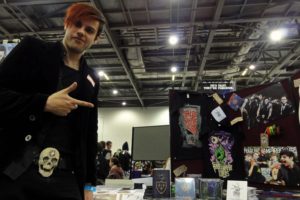The interview with Apollo Cosplay was conducted at MCM London Comic Con, in the Excel Centre, on 26 October 2018. I have had people tell me that this is the best cosplay interview they have ever read. Apollo Cosplay went so far as to call it their favourite interview they have ever done. It was originally published on MyM Buzz on 19 November 2018.
—
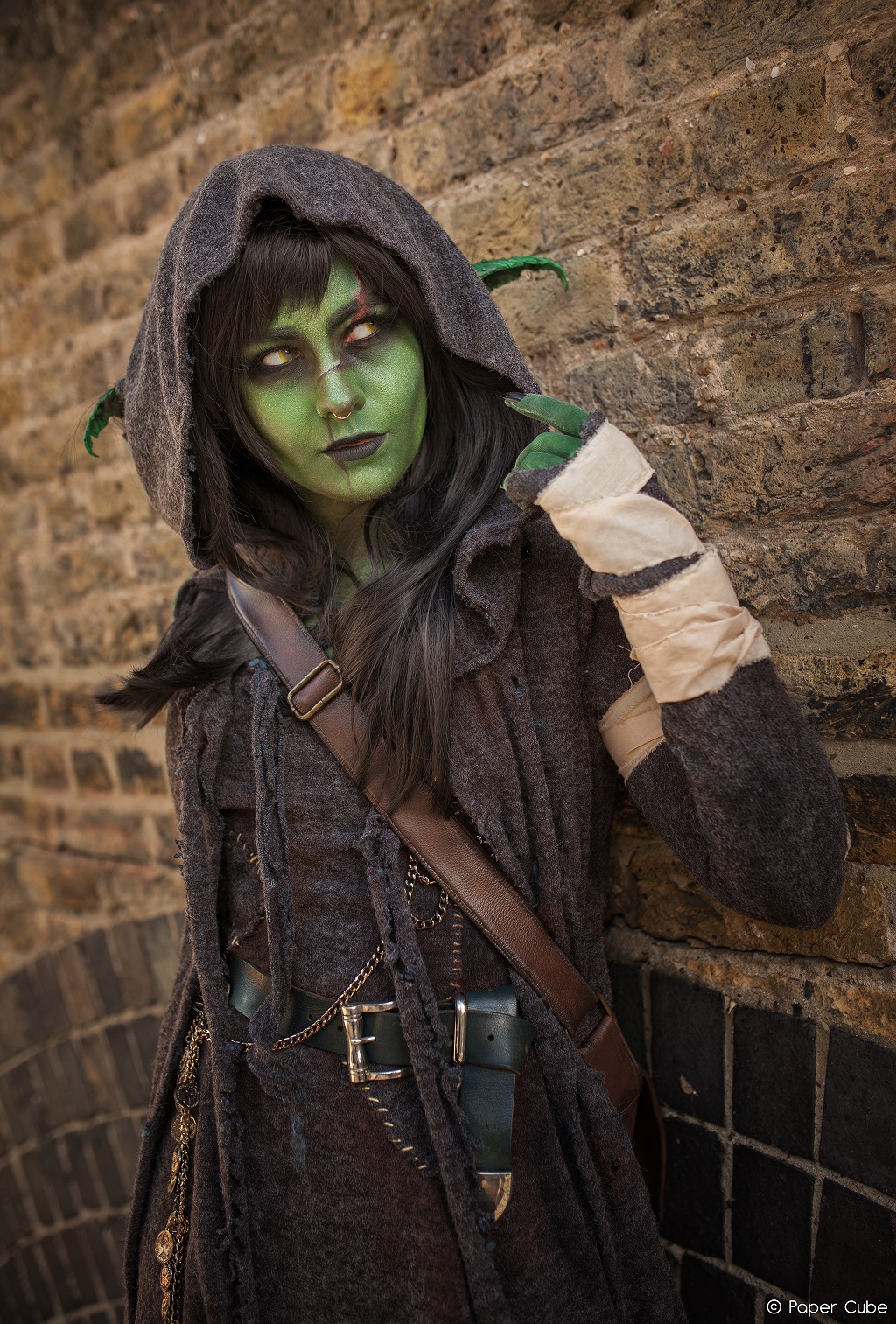
“Gender shouldn’t really matter,” says Phoebe, aka Apollo Cosplay, when talking at MCM London Comic Con about gender in cosplay. “Especially in the cosplay world where we’re all being weird together. There are people down here walking as mecha robots from the year 3000 and that’s the weird thing.”
Apollo Cosplay’s first convention was MCM London Comic Con in October 2014. “It was very overwhelming. I absolutely loved it,” said Apollo of the experience. After the convention they started working on their first cosplay, Lady Loki, saying that they “never intended to get into cosplay,” they just liked Tom Hiddleston’s Loki from Marvel’s Thor.
Since then they have cosplayed characters such as Akane Tsunemori from Psycho-Pass, Sarah from Labyrinth, and Ignis Scientia and Lunafreya Nox Fleuret from Final Fantasy XV. In May 2017 they took part in the UK qualifier for the International Cosplay League at MCM London Comic Con, cosplaying Angela from Guardians of the Galaxy. They won and went on to represent the UK at the final at Japan Weekend Madrid. Describing their own gender identity as non-binary, in June 2017 they posted how cosplay gave them “the confidence to come out as trans.”
Our interview was conducted on the Friday of MCM London Comic Con, October 2018. Over the weekend they cosplayed Nott the Brave from Critical Role and Gavin Reed from Detroit: Become Human, taking part in photoshoots with photographer Papercube.
During our time Apollo Cosplay was relaxed and delightful as we discussed makeup tutorials, their experience taking part in the International Cosplay League, invisible disabilities, and the confidence cosplay has brought.
—
Who are you cosplaying at MCM London this weekend?
I’m starting off on the Saturday as Nott the Brave from Critical Role. Of course, the cast are turning up this weekend and I’m very excited. Then on Sunday, I’m going to be doing Gavin from Detroit: Become Human.
I understand you’ve got different costumes when it comes to what your first cosplay was.
It’s hard to say what my first cosplay was as cosplay. I’ve always counted my first cosplay as Loki because it’s my first one that I physically made.
You said, “I started work on my first cosplay back in the end of 2014; my Lady Loki. I never intended to get into cosplay, I only ever wanted to cosplay Loki.”
I wore that Loki cosplay in May 2015 but I started work on it after MCM London, October 2014. At the time I was absolutely in love with Tom Hiddleston’s Loki, to the point where I had every single poster from all the promotional work that had ever come out. So in my room I’d have posters of the same poster, but with slight changes.
I started to make Loki because there were other cosplayers that were making their Loki at the same time. And, bless their souls, they were also posting about it on Instagram and Tumblr. As they made it, I was seeing how they were making it and I could work through how to make it myself. At the same time, my friend wanted to do a Disney princess themed party for her birthday. I have not always been a fan of Disney, mainly because of the gender stereotypes of old-school Disney. But I’ve always loved Merida [from Brave], even though she’s Pixar but associated with Disney because of the merge. I really wanted to do Princess Merida, but no one sold a Princess Merida costume for an adult that looked good. So me being me, I go, “You know what, I’ll research this. I’ll find a dress that’s really close and alter it.” I don’t really count that as cosplay, because for me, it wasn’t cosplay yet. I wasn’t roleplaying, or going to a convention. I wasn’t fully making stuff. I was going to a friend’s birthday party.
Some would argue that it’s still cosplay.
It’s still technically, but I didn’t see myself as a cosplayer doing that. Then, very close to these events, I discover anime on Netflix.
Which anime?
It was Attack on Titan. [I then realised] you have access to a lot of pre-made cosplays on Amazon and eBay for the anime fandom. So suddenly it wasn’t a question of, “How would I make this? I’ve never done anything with sewing before. I’ve never done any prop making.” Instead it was, “Click. Buy. I’ve got a cosplay!”
After you managed to accomplish Loki, what kept you interested in cosplaying further?
Throughout my childhood, I was always that kid that was constantly making. I was constantly painting, I was doing embroidery, I was baking, I was knitting, I was crocheting. I’d go through all these little fads of wanting to do something creative when growing up. Then suddenly cosplay comes along which is a massive amalgamation of lots of different craft stuff that I have a really simplistic knowledge of. I can suddenly transfer all that creative energy into a project that was going to be a cosplay and that’s what kept me going.
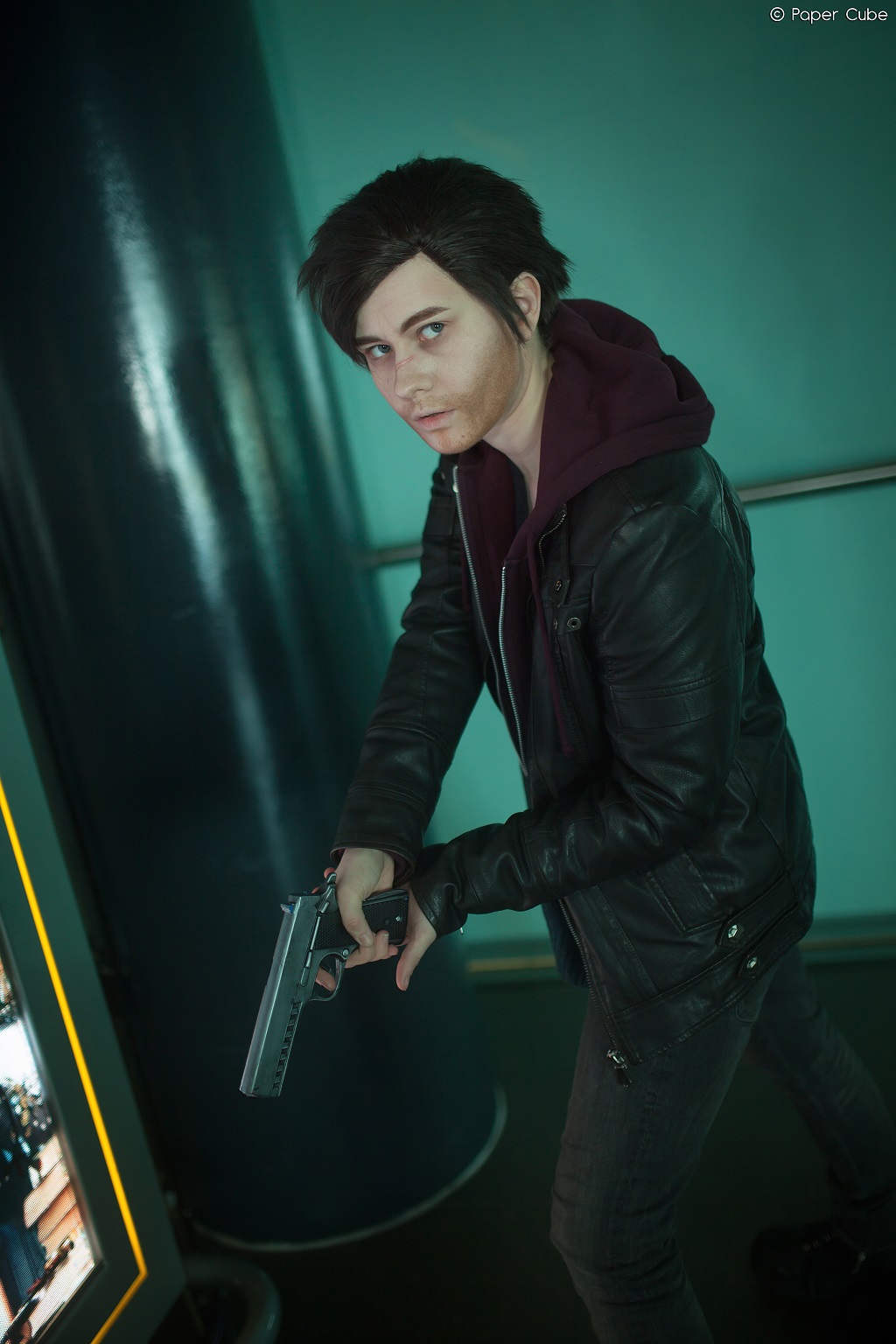 |
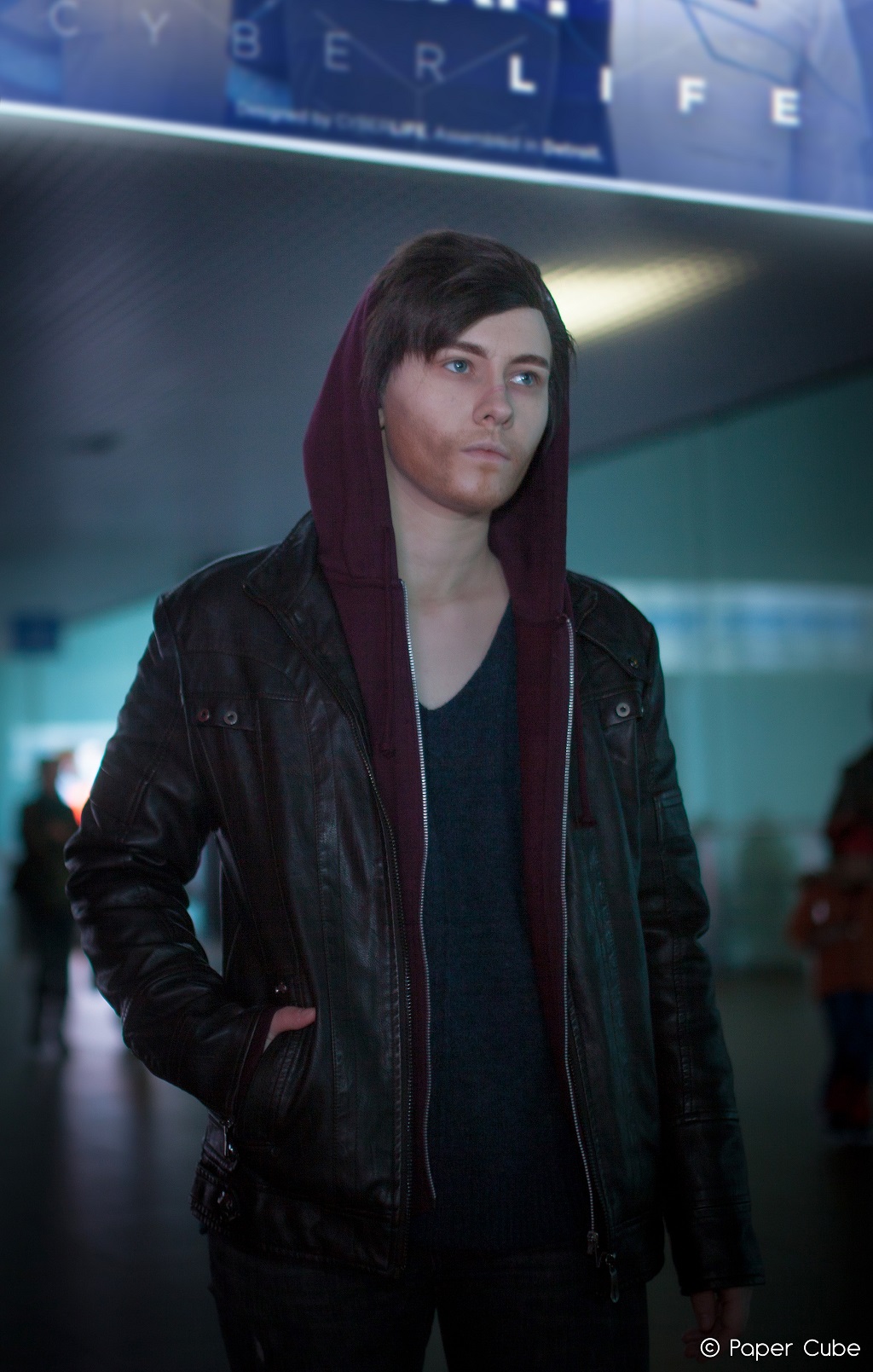 |
What was the first convention you went to?
MCM London, October 2014.
How was that experience?
I had never been given an opportunity to go into a convention space with like-minded people because I grew up in a different country. I had grown up in Italy as a child and all the way through to 16 years old, obviously there’s a big language barrier because I never learnt Italian. I went to school on what was an English speaking NATO base. My father collected comic books when he was a kid and we’ve got his original comic books. So our comic book collection is in the thousands and they were my bedtime stories growing up. So I was a complete nerd from the get-go.
Suddenly I was in the UK, I was in boarding school.
My friend went, “Oh, there’s a convention.”
I was like, “Really? There’s a convention for these things!?” (Laughs)
And that was the start. I had come to MCM in not really a cosplay but a weird steampunk thingamajig and saw all these amazing cosplayers and loved what they did. It was a wonderful feeling of acceptance and coming home. Because I’ve always been a bit of an oddball, a bit of a nerd, and all these things that traditionally weren’t seen as positive by other kids my age… suddenly you’re with thousands of people who share the same interests and the same outlook on life. There’s a very positive energy that runs through conventions and I really loved that in my first convention. It’s why I keep coming back; the overarching feeling of positivity that everyone has and the possibility that someone could come up to you who also loves the same interests.
You’ve uploaded a few makeup tutorial videos, such as Genos from One Punch Man, Alucard from Castlevania, Connor from Detroit: Become Human and Merida from Brave. What are the chances of seeing more makeup tutorials in the future?
Very likely. I’m trying to do more of them because I do like sharing my process of how I work. I’m also trying to get back to doing a certain stylisation of makeup videos. Because as time went on, I started to do makeup videos where I wouldn’t talk, but I had feedback from people saying, “No, the videos where you talk are brilliant, because you’re so odd and you’re usually ranting and it’s great to hear!” So I’m trying to get back into that swing of things and being a bit more sarcastic as I do makeup videos.
Do you feel like you have to play up to that audience, or do you think, “No, I should just be me”?
I think it’s both. I like pleasing my audience because I like pleasing people. It’s a question of how I feel on the day. If I ‘honest-to-God’ don’t feel like talking while filming a makeup video, I just won’t. That’s just how it’s going to be. But quite commonly, I want to chat while I work. A little while back I was feeling that people didn’t want to hear what I was saying. I was feeling a bit… like loss of confidence about what I was saying to camera. So I stopped talking. Now… I’m feeling a bit more confident again, so I’m going to start talking again (laughs).
Did you want to say what makeup tutorials you have planned, or is it just a case of wait and see?
(Pauses) There’s nothing that’s lined up. There’s a Luna [from Final Fantasy XV] makeup tutorial that’s coming soon. There is another Connor coming up, which is a prosthetic element Connor, with prosthetic SFX makeup, like an alternative version.
Like your spin on how you would want to see Connor?
Yes, my own sort of AU Connor that’s a bit damaged, because I like doing characters that are a bit beat up for some reason. It’s a wonderful way to practice doing bruising, blood, or cuts. That’s always very fun to do.
For your cosplay of Angela from Guardians of the Galaxy, you posted an interesting reaction when initially wearing it, saying how you “really like how it looks” and that you were proud of it, but your mind was telling you that “it’s not good enough.” Do you still tend to feel that way when finishing a cosplay?
Hmm… that is a hard question… because the answer is predominantly yes. I think when people start to make things themselves from scratch, they always have a perfected idea in their head of how it’s going to turn out. That idea is usually the reference image. Unless you’re a hyper-talented person with years of experience, you’re not going to be able to get it perfect.
I still count myself as quite a novice cosplayer when it comes to making things and sewing. So there’s always a sort of frustration at the end that it’s not picture perfect like the reference image. I always get over that feeling eventually, it just takes a little while.
The realisation of, “Well, I’m not going to get one hundred percent. Ninety-eight percent… I’ll be okay with that.”
Exactly, yes. I’m proud of what I’ve done, but it’s not exact. But then the next question is, “Does it have to be exact?” This is cosplay.
As you said, you like doing your own spin on cosplays. I know for some people the perfectionist side takes over, to the point where they’re like, “But it’s got to be like that.”
I once spent three months embroidering the back of a cosplay that was not ever going to be seen. But because I knew it was there, it just had to go on. That was ridiculous. I don’t know why I did that.
That feeling of, “No one else may see that. But I know that, I’ll see that.”
I know it’s there.
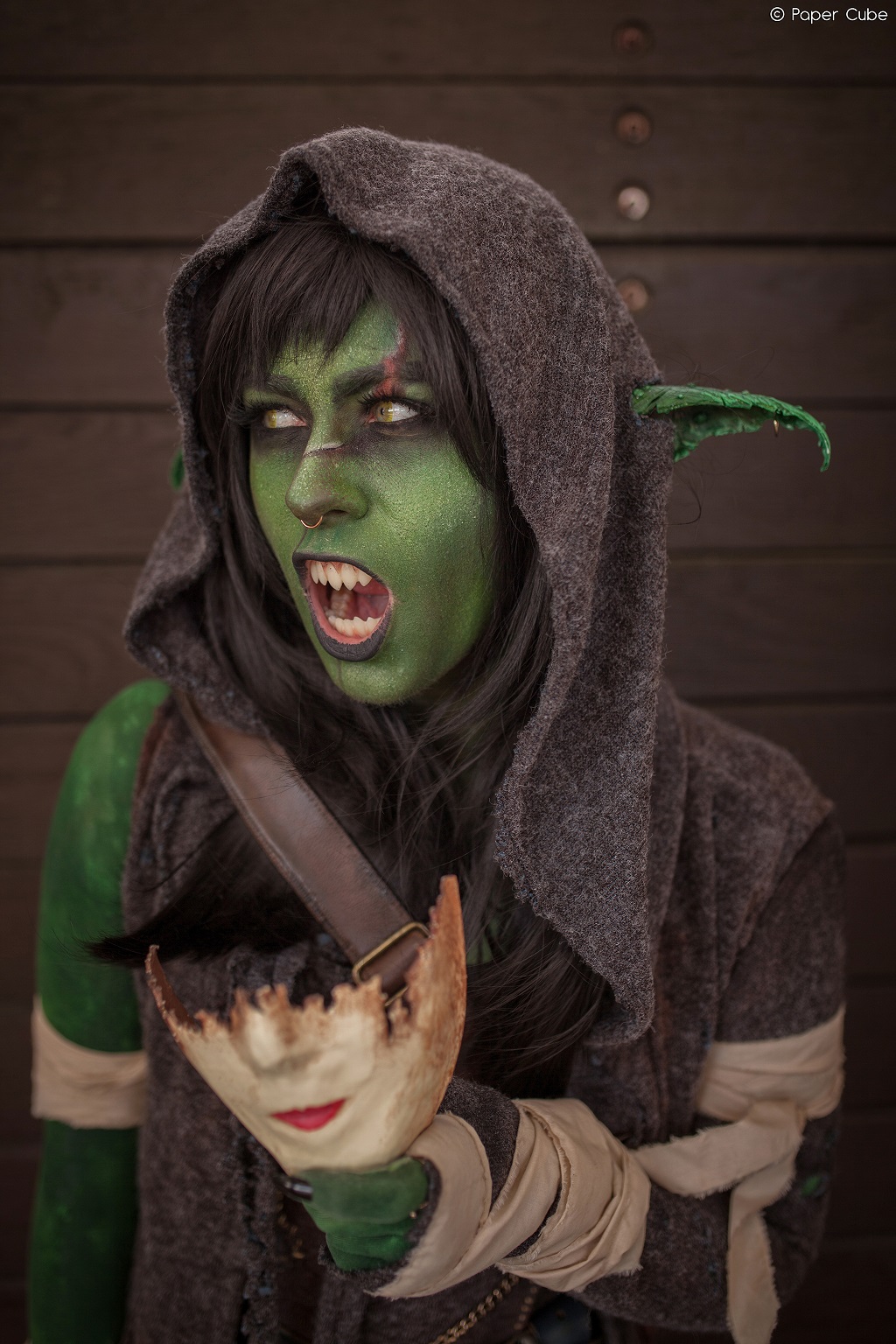 |
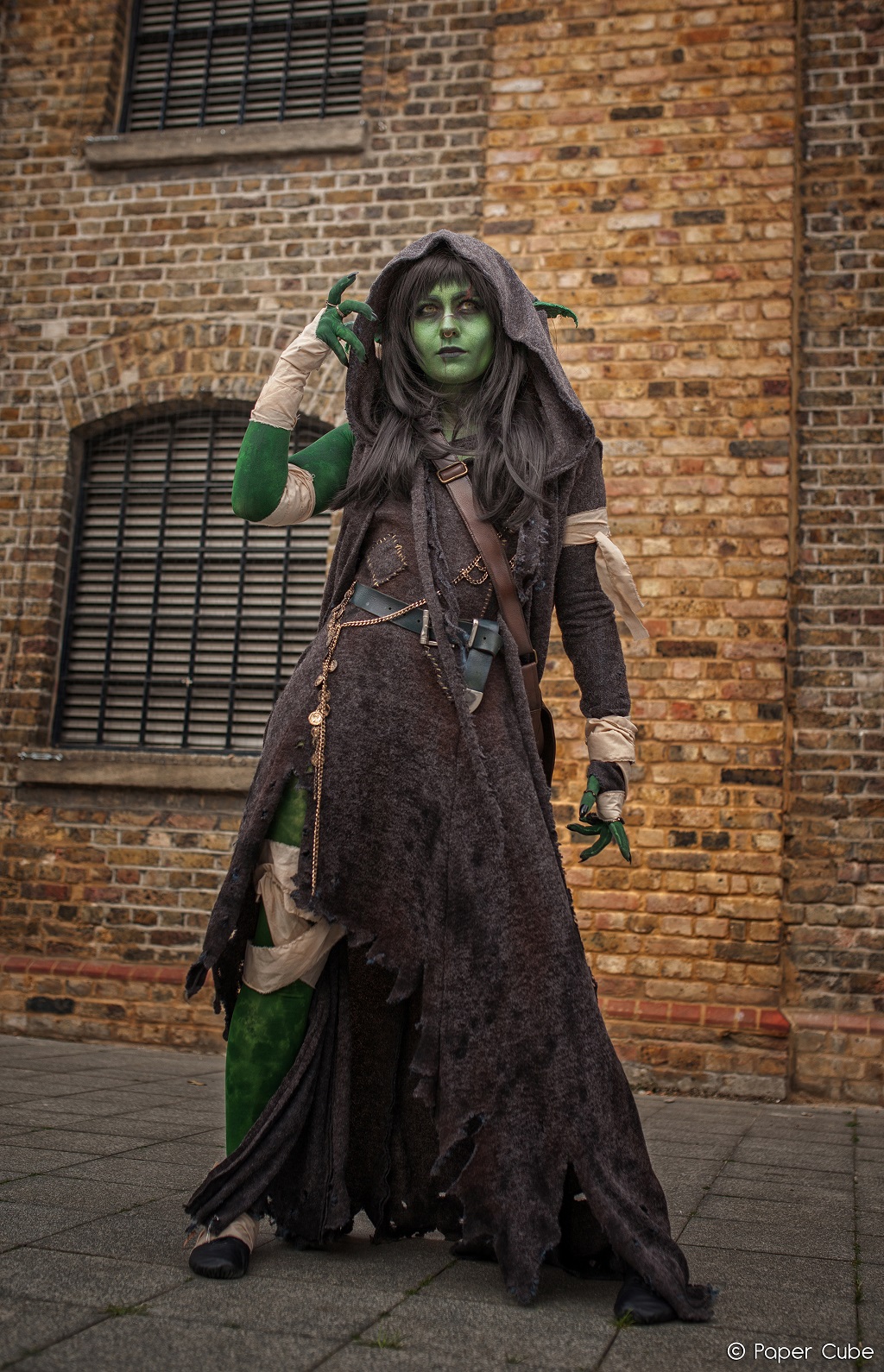 |
Merida from Brave is one of your early cosplays. You described how you “love cosplaying her and the confidence it brings.” Keeping with confidence, last year, you described cosplay as giving you “the confidence to come out as trans” when you were “still recovering from mental hardship.” In what way did cosplay give you the confidence?
I’m in the interesting category of non-binary, which is an umbrella term for someone who doesn’t fall into the two binary genders. Growing up with a different language being spoken around me, I didn’t have a good linguistic knowledge of transgender and all the subcategories within transgender. Being a part of the cosplay world, I was suddenly being introduced to people who were a part of the LGBT community. Because of that my vocabulary and my knowledge started to grow. Suddenly I had all this knowledge and started to realise that a lot of my mental hardships that I faced growing up with depression and anxiety were related to some of the same issues that my friends were talking about.
As for how cosplay gave me a lot of confidence to do it, there’s an interesting thing here in that I cosplayed my first male character, I think in 2015, and I got myself a binder for it. I think it was Levi from Attack on Titan. There was a feeling of euphoria putting on a binder and the realisation of, “Oh, this feels natural to have a binder on and not a bra.” I noticed that as I started to do more male characters, the more confident I grew in myself out of cosplay. It dawned on me quite quickly that the more I presented as androgynous in real life, the happier I felt. I really have to thank doing male characters in cosplay for that, because there was that realisation of happiness and confidence. Both in body confidence, to be happy to show skin even, and the confidence just to talk to people. That was the realisation where I was like, “Right, I have to come out, because this is happening.” I finally have the vocabulary, I have the knowledge that I’m happy, so I’ve got evidence. I’m definitely this and now I need to make the relevant changes in my life to let me live happily.
Which you’ve been doing.
Yes, and it’s worked out quite well so far (laughs).
And documenting.
I have. It’s been fun.
Would fun be the right word?
The transition itself isn’t always fun, but what I’ve really enjoyed is the telling of my story. A big part of my YouTube videos is telling my tale. I found that really enjoyable and quite therapeutic actually, to explain my situation and my happy moments but also my sad moments. I’ve had some people come back to me saying, “I couldn’t explain this to my parents. They weren’t getting it. But then I sat them down in front of your Non-Binary: A Tale story and they got it, because of how you described it.” I think that’s brilliant.
So would you say that cosplaying has helped you push your own boundaries when it comes to gender identity, as an outlet to experiment with a new look?
Oh yeah. Cosplay is wonderful because you have the opportunity to be a character for a day and then someone else the next day. You also have the ability to put a wig on, do a certain stylisation of yourself and then the next day do something completely different. That really allows you to experiment with what you like, what makes you happy and what doesn’t. It allowed me to learn, quite quickly actually, more than I would have learnt without cosplay, what made me happy.
You entered Angela in the UK qualifier for the International Cosplay League at MCM London Comic Con in May 2017, and you won, saying “I’m so so shooked and blessed.” You then went on to take Angela to the International Cosplay League final at Japan Weekend Madrid. What was that experience like?
It was a very surreal experience. This was the first full armour build cosplay I made. It was the first competition I’d ever done. I was very doubtful of my skillset. The night before I was texting a friend from the Netherlands, Marlies Keijzer aka Lisu.chan cosplay, who won the Dutch qualifiers for ICL that year and has competed in World Cosplay Summit and Euro Cosplay Gathering and many more. I messaged them going, “I think my standard is not good enough.” She told me where to put it and just go ahead and compete.
The day of the competition itself in MCM London was a really rough day. I’ve got a condition which is called Postural Orthostatic Tachycardia Syndrome (PoTS) and it was acting up badly, so I was struggling to stand throughout most of that day. Considering the fact I stayed seated up until the point I got on stage, and then sat down instantly, the fact that I won was a very surreal thing.
It was this weird kind of journey of almost no confidence in my cosplay, although I was proud of what I did, to winning, to then once again go into a new world of cosplay with new people who are really at the top of their game and to be judged as an equal among them. It was a really incredible experience and a wonderfully positive one.
I can also say that the staff at the ICL are the most incredible staff. I’ve heard some negativity about other cosplay competitions, that they’re very, “You are here to work and you are here to compete.” But at ICL in Spain, the staff there are just like (excited), “You’re here to have a good time! We’re all going to have dinner every night together! We’re all going to party together!” It’s about having fun and I loved that about it. Cosplay is about fun at the end of the day.
You said at the time, “I still think that my cosplays are nowhere close to being in the other contestants league yet.” That was a year ago. Do you still feel that way about your cosplays today?
Yes (laughs). It’s not a good thing to keep thinking that. I think I’m always going to struggle a little bit with… when you produce something, there’s always going to be someone who can produce it a little bit better. Be that because they’re naturally talented, be that because they spent 20 years perfecting their craft. For me, I have to keep reminding myself that that’s not the point. But there’s always a slight little negative voice on my shoulder going, “It’s not really that great.”
Given what you have said, how would it make you feel knowing that there are people that do see your work and would say something similar? They would say, “I am nowhere close to being as good as Apollo Cosplay.”
Again, it’s just surreal. I think we all see ourselves as slightly less than what we are. I’m still kind of in shock that I have a following and that people get really excited when they meet me, because… I’m just me living my life. But it’s a wonderful feeling. It’s wonderful that I can bring some happiness, or just a laugh to someone else by something that I’ve done. I love sharing. I like creating something positive for someone else. I get a lot of personal happiness from other people being happy. So it’s a nice aspect of fandom.
You did a talk on cosplay and disability at EGX, invisible and visible disabilities. You’ve also started a video series on your life with PoTS. What would you like to achieve with this video series?
I think it’s about exposure right now. PoTS is a condition that affects a huge number of people in the world, but as it’s a condition that’s only really been around in the last ten years a lot of paediatricians and GP’s don’t know what it is. It affects millions and it would be great if more people knew about the symptoms and the triggers of it. In the last three years, I’ve met three people who right now are going through their ongoing medical diagnosis of what’s wrong with them. They’ve got these symptoms but no one seems to know what it is. These three people, after I talked to them, I said, “Have you heard of PoTS?” They’ve all been diagnosed with PoTS. It’s frustrating that they’ve been diagnosed with PoTS, but now they can go on to receive medical help.
I just hope that by talking about my life, how I deal with PoTS, about the symptoms, about the triggers, that someone somewhere will go, “(Gasps) That’s what I’ve got. I have to check it out. Let me go test.” Then, hopefully, their quality of life will improve because of that.
There was a comment you made about your cosplay of Angela on Instagram. Being an armour build, you mentioned it was uncomfortable and it has left you with bruises.
(Laughs) Yes.
You also said, “It’s not cosplay if you are not in pain!!!” Do you still stand by that statement? Especially when you say cosplay should be fun.
It’s a weird way of looking at the world. Because it was my first full armour build I did not make it comfy thinking of practicality. So it has left bruises. You would think that because I’ve had that cosplay for a year I would have sorted that fact. No. I still wear it and I still get the same bruises when I wear it. But you shouldn’t be in pain when you’re cosplaying.
But I also know quite a few people who find a lot of enjoyment in that pain, which is a bit odd. I think… they feel strong if the cosplay is against them. They’re doing it in spite of something. I think that’s why people use the phrase along the lines of, “It’s not cosplay if you’re not suffering.” I hear that a lot and I’m guilty. I use that buzzword ‘suffering’ a lot. I don’t know if I stand by it because it’s not a good thing, but it’s definitely something that I still say. That’s a very hard question to answer!
So, why put yourself through more pain to cosplay?
Yeah, that’s a good question… (pauses).
I think the drive to make is why I keep cosplaying. There’s also a massive social aspect with conventions. You want to be in a costume with friends. You want to be seen for your work and for people to appreciate your work. There’s vindication for all the hours you’ve spent sanding something repeatedly. So you keep doing it and you hope that as you make the costume it won’t hurt you on the day. But sometimes it just does and there’s no time to fix it, so you just wear it anyway. Then you’re very happy at the end of the day. It might have hurt but you had a good day nonetheless.
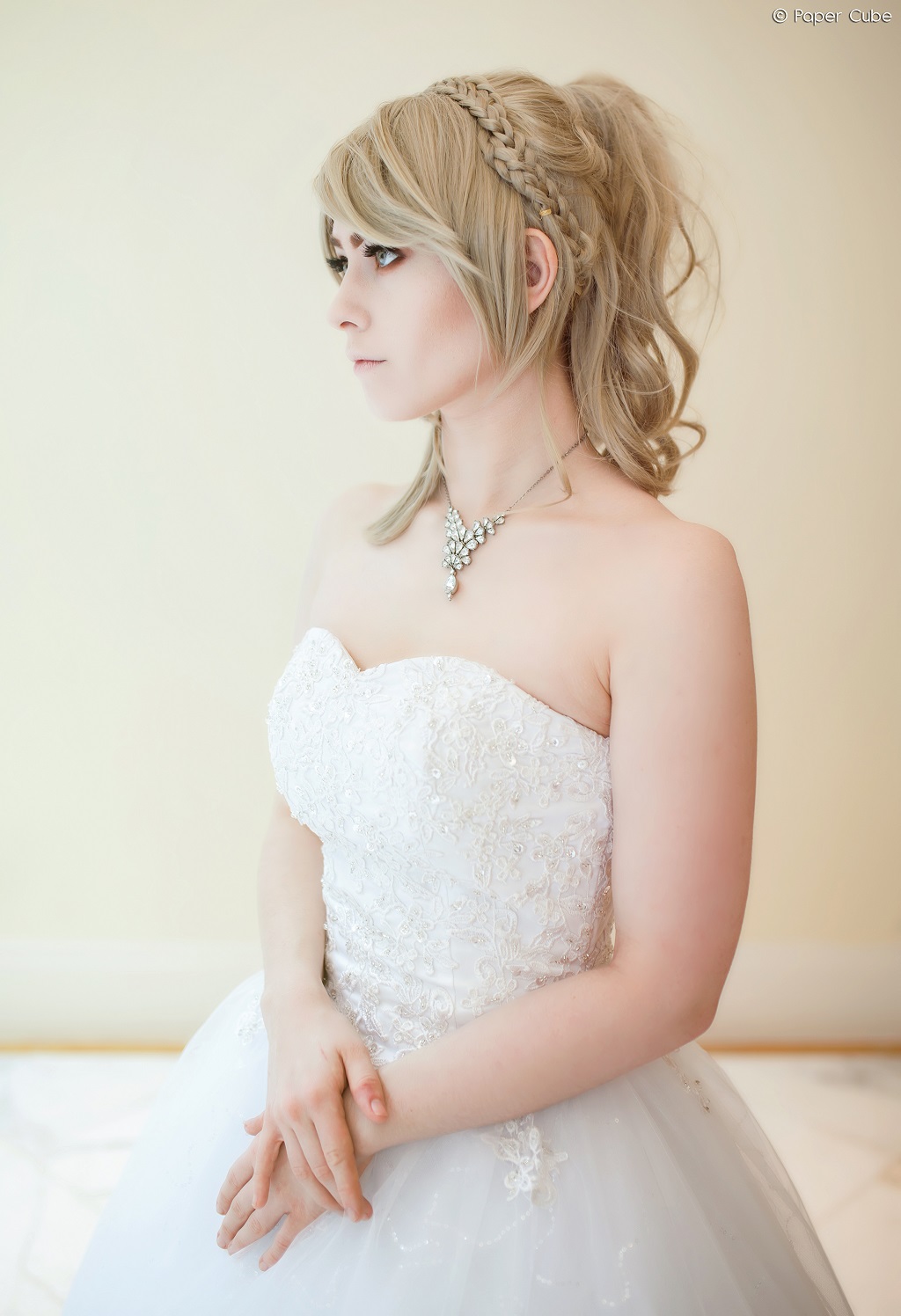 |
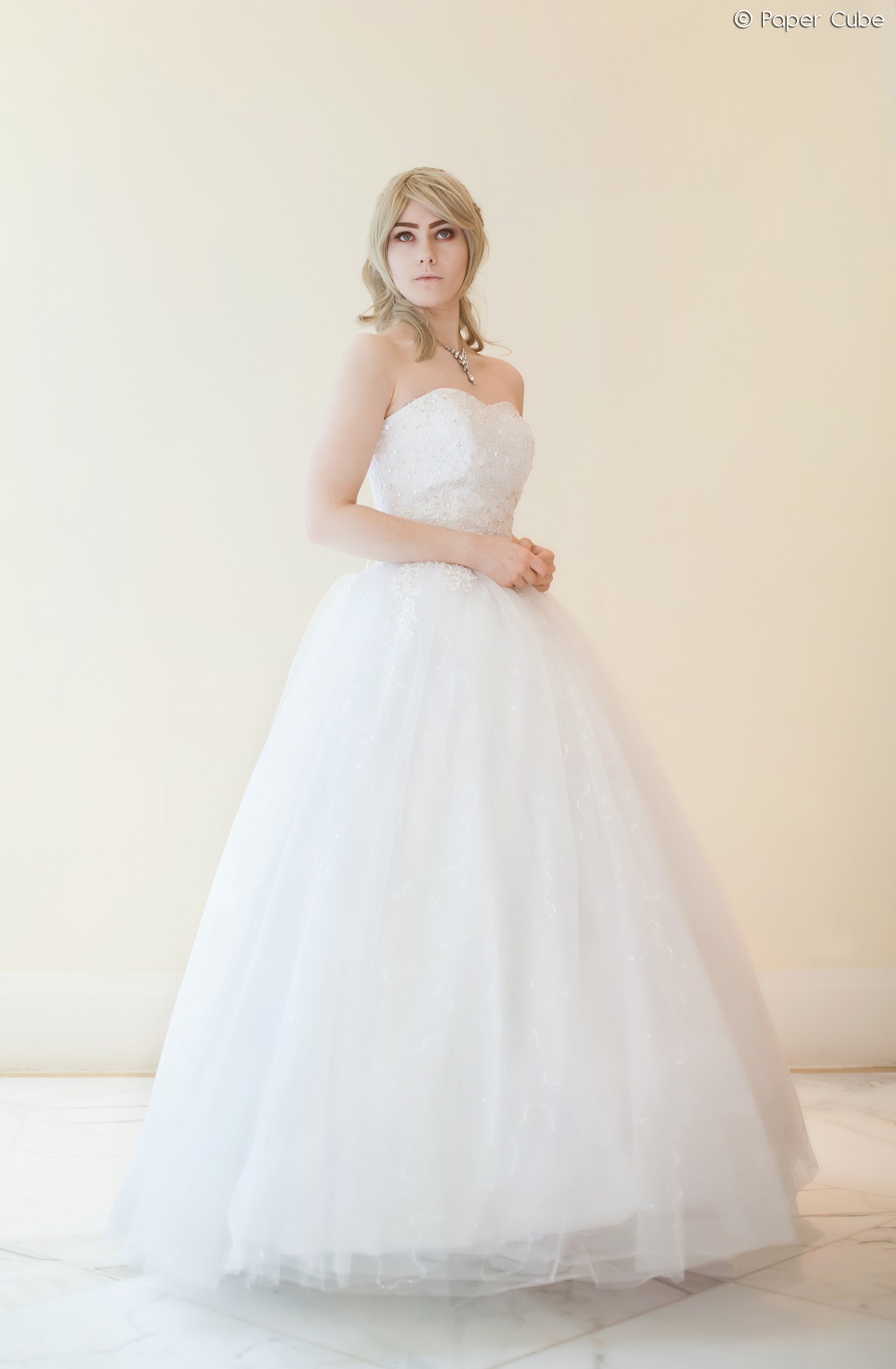 |
I understand that Angela was probably your most expensive cosplay?
No… not anymore (nervous laugh).
So I was going to ask…
(Bursts out laughing)
What has overtaken it?
So, have you seen the photos of my Sarah cosplay from Labyrinth? The amount of fabric that came together… I think it’s around the £800 mark… just for the cost of the fabric. Because each layer has three different layers of fabric in it and there are seven petticoats underneath (takes a quick bow). So the amount of fabric that had to be ruffled together and that’s a lot of fabric that came to a very big amount… eventually. I didn’t buy it all in one go.
Do you not stop and think, “Hang on, I’ve already spent this much, I think I better stop”? Or is it the drive where you’re already in the middle and think, “I’ve got to finish this cosplay”?
I think it’s the latter. Also, because I’m not buying things upfront and I’m not making stuff in a very short space of time, I’m making it over months. So you don’t really notice [how much you’re spending]. “Oh, here’s another £20 for more beads. Here’s another £50 for the wig.” Then it’s the next month and you’ve forgotten that you’ve spent so much, but you still need another aspect of the costume, so you buy it. So it’s more of a (shrieks) at the end when you go, “Oh God, that’s actually how much it cost me to make.” Then again, if I ever want to sell it, that thing will go up for sale for probably over £1000.
You started Patreon in June 2017. What made you decide to use Patreon?
I started following people on Patreon and subscribing to their content first. I was following people like Moderately Okay Cosplay and AKrCos. I liked this way of producing content each month at different levels and people being kind enough to give money in return. I am very lucky financially in that I’m very stable, but cosplay costs a lot of money and you always need a bit more. Especially when you’re making costumes that are very big.
I saw Patreon as being a very good business endeavour. It was a good way to get some extra money for cosplay and at the same time give back. I also found that I was already creating content every month at a very fast rate. So I didn’t need to up my game and create more for Patreon. I could just separate what I was doing, put it into tiers and do what I was naturally doing every month, but do it for a fee, which is great. My Patron supporters have become like a small family to me. I talk to most of them every day and share not just cosplay work but stuff from my ‘normal life’. It’s a small community that does so much to support me. I adore them and can’t imagine life without their presence.
Finally, do you still dance when costesting?
Yes (laughs). I love a good hi-fi system. I like listening to music and when we play music we play it loudly. So if I’m getting into a cosplay to costest it, music will inevitably be on. I found that one of the best ways to test if a cosplay is going to stick together during a convention is to dance, or do one of my dance routines to a K-pop number. Because that’s a lot of movement, it’s a lot of stretching in weird places and if everything stays on, you’re good to go. If not, you might need to fix something.
—
Thank you to Apollo Cosplay for taking the time out for the interview. You can follow them on Facebook, Instagram, YouTube and support them on Patreon.
Thank you to Papercube and Harriett Greene (Manga Girl Photography) for the photos.
Interview by Shalimar Sahota.
